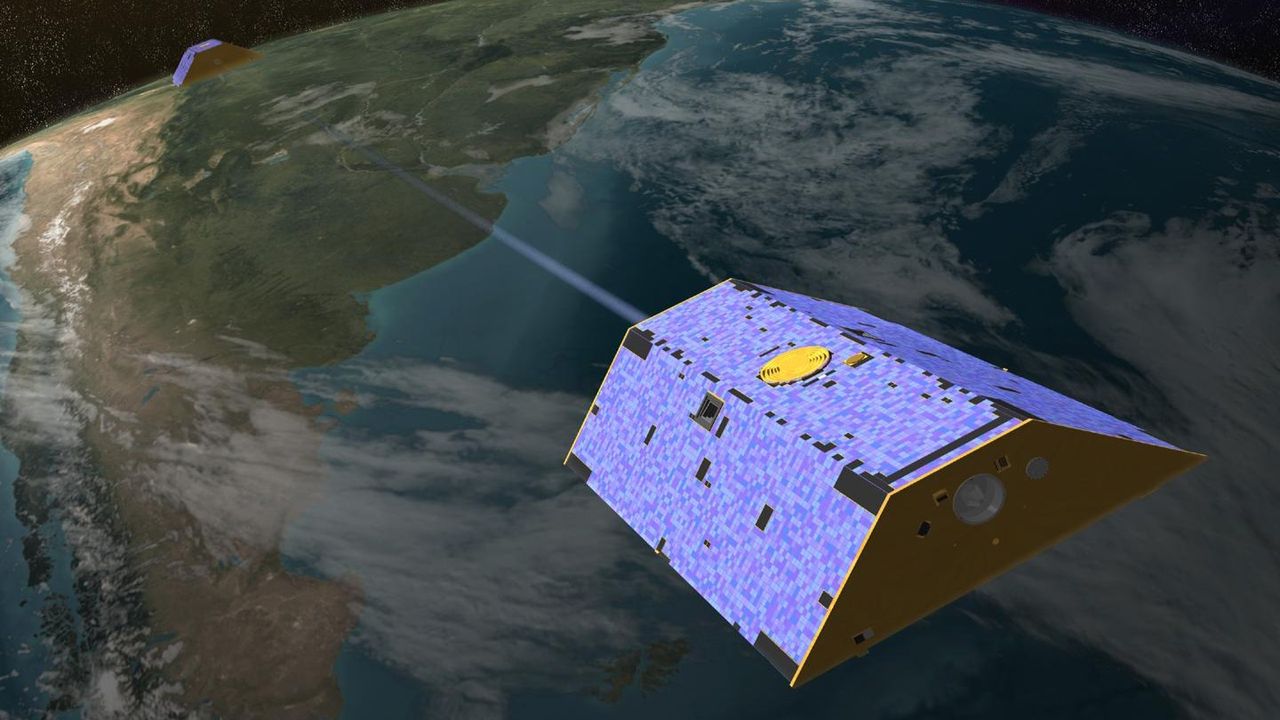Science
Satellites Uncover Deep Earth Gravity Anomaly from 2007

A recent study has revealed that satellites detected an unusual gravity signal off the coast of Africa nearly two decades ago. This anomaly suggests significant geological activity deep within the Earth, distorting its gravitational field. The gravitational disturbance persisted for approximately two years, peaking in January 2007, coinciding with notable technological developments, such as the announcement of the first iPhone by Steve Jobs.
Researchers uncovered this signal while analyzing data from the Gravity Recovery and Climate Experiment (GRACE) satellites, which operated from 2002 until 2017. The study, published on August 28, 2023, in the journal Geophysical Research Letters, highlights a correlation with a geomagnetic “jerk,” an abrupt change in the Earth’s magnetic field recorded during the same timeframe.
The gravity anomaly extended about 4,350 miles (7,000 kilometers) from 2006 to 2008, nearly the length of the entire African continent. This extensive anomaly is believed to be linked to a previously unrecognized geological process, prompting researchers to delve deeper into Earth’s inner workings.
Mioara Mandea, a geophysicist at the National Centre for Space Studies (CNES) in France and principal investigator for the European Research Council’s Gravimetry, Magnetism, Rotation and Core Flow project, initially questioned the anomaly’s validity. In an email, she expressed her skepticism: “As is often the case in scientific research, my initial response was one of questioning: is the signal genuine, how can it be validated, and how should it be interpreted?”
The GRACE satellites, a joint mission between NASA and the German Aerospace Center (DLR), measured variations in Earth’s gravity by tracking the distance between two identical spacecraft. This method allowed scientists to identify changes arising from mass redistribution within the planet, which is affected by various factors, including ocean currents and geological structures.
In this study, researchers focused specifically on gravity signals that could not be attributed to surface mass shifts. Instead, they proposed that the anomaly was a result of a mass redistribution occurring deep within the Earth’s mantle, particularly through a transformation of magnesium silicate (MgSiO3) under pressure.
The authors suggested that this transformation, from perovskite to post-perovskite phase, may have contributed to the gravitational changes observed. Mandea emphasized the complexity of Earth’s internal processes, stating, “Earth is a complex system that must be studied using diverse datasets and complementary methods of analysis.”
This research underscores the need for a multifaceted approach to understanding the planet’s geology and magnetic field dynamics. The findings provide valuable insights into the Earth’s deep mantle and highlight the importance of continued exploration and analysis to unravel the mysteries beneath the surface.
As scientists work to comprehend the implications of these findings, the interplay between geological activity and gravitational anomalies offers a fascinating glimpse into the dynamic nature of our planet.
-

 Technology5 months ago
Technology5 months agoDiscover the Top 10 Calorie Counting Apps of 2025
-

 Technology3 weeks ago
Technology3 weeks agoOpenAI to Implement Age Verification for ChatGPT by December 2025
-

 Health3 months ago
Health3 months agoBella Hadid Shares Health Update After Treatment for Lyme Disease
-

 Health4 months ago
Health4 months agoAnalysts Project Stronger Growth for Apple’s iPhone 17 Lineup
-

 Health4 months ago
Health4 months agoErin Bates Shares Recovery Update Following Sepsis Complications
-

 Technology5 months ago
Technology5 months agoDiscover How to Reverse Image Search Using ChatGPT Effortlessly
-

 Technology3 months ago
Technology3 months agoElectric Moto Influencer Surronster Arrested in Tijuana
-

 Technology5 months ago
Technology5 months agoMeta Initiates $60B AI Data Center Expansion, Starting in Ohio
-

 Technology2 months ago
Technology2 months agoDiscover 2025’s Top GPUs for Exceptional 4K Gaming Performance
-

 Technology5 months ago
Technology5 months agoRecovering a Suspended TikTok Account: A Step-by-Step Guide
-

 Health5 months ago
Health5 months agoTested: Rab Firewall Mountain Jacket Survives Harsh Conditions
-

 Lifestyle5 months ago
Lifestyle5 months agoBelton Family Reunites After Daughter Survives Hill Country Floods





















